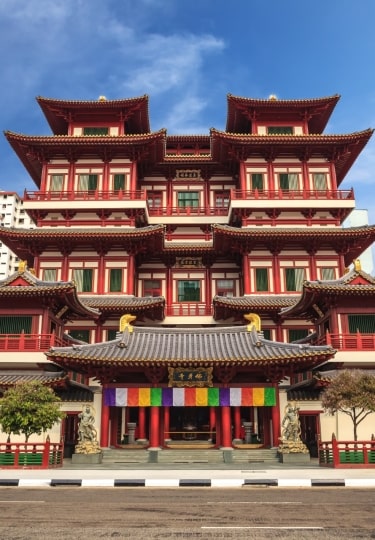Singapore’s Chinatown is the city’s largest historic district, allocated by Stamford Raffles when founding the port city in 1819. Yet the area’s connections with different Chinese communities span centuries, leading the four easily walkable sub-districts to have subtle differences in architecture, religious buildings, and even cuisine.
Exploring Chinatown Singapore, or Niu Che Shui as it’s known in Mandarin, you’ll cross countless typical terraced shophouses adorned with colorful wooden shutters, street art, historic temples, shrines, and mosques while being lured into hawker centers by the fragrant aromas of street food.
Chinatown might only be a short stroll from Singapore’s perfectly landscaped Gardens by the Bay and futuristic downtown high-rises, but at times it feels a world apart.
Attractions in Singapore’s Chinatown
Buddha Tooth Relic Temple and Museum
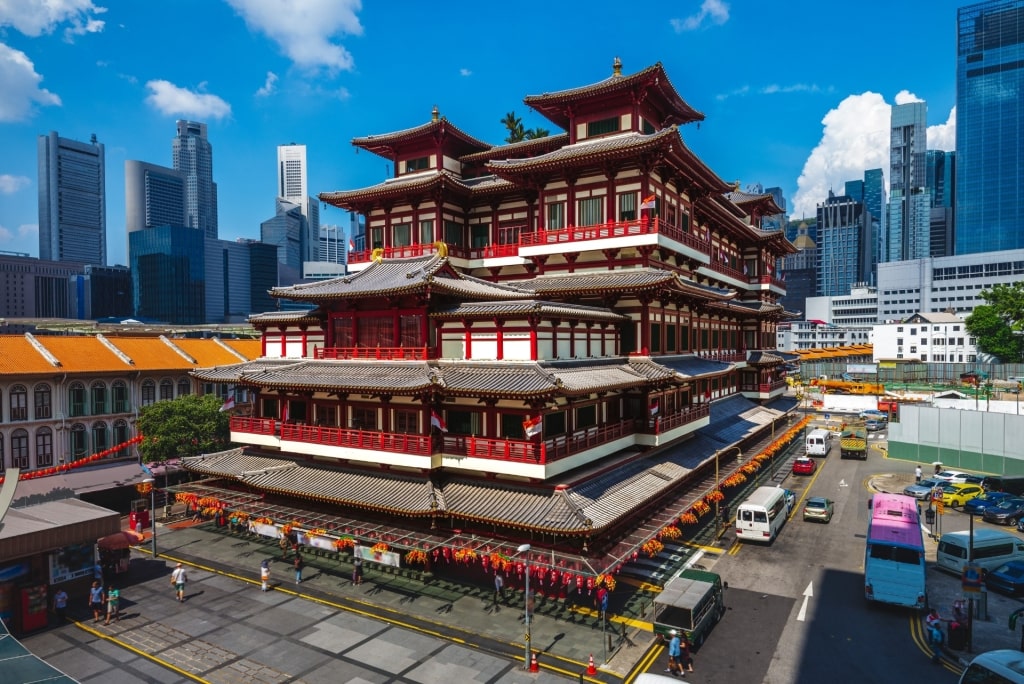
Buddha Tooth Relic Temple and Museum
The centerpiece of Chinatown Singapore since its construction in 2007, this Tang Dynasty-style temple compensates for its youth with majestic grandeur. Though, it’s the Buddha’s canine tooth, transported from Kushinagar, India’s famed pilgrimage site, that steals the spotlight.
Dominating the Singapore Chinatown district, the five-tiered, crimson temple contains a trio of museums, including the Eminent Sangha space and the Buddhas of the World collection, both dedicated to aspects of Buddhism’s role globally.
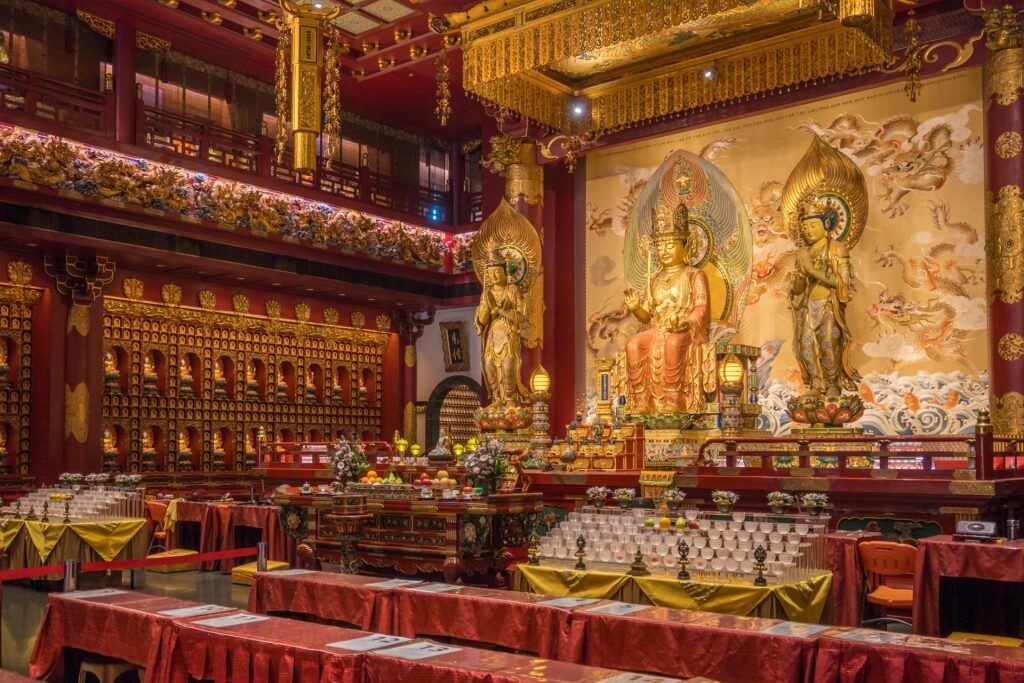
Buddha Tooth Relic Temple and Museum
Yet neither holds the same importance as the upper Sacred Relics Museum, displaying the most important pieces, including the tooth relic shown on a stupa in the upper Sacred Hall of Light. Only monks are allowed inside the space, but visitors can peer in from the viewing hall.
If the temple is crowded on arrival, there’s an idyllic little tea house next door named SILK, perfect for pausing with freshly brewed loose-leaf tea while waiting for larger groups to depart. Regular ceremonies and events are hosted at the temple so it’s advisable to check the schedule the day before.
Thian Hock Keng Temple
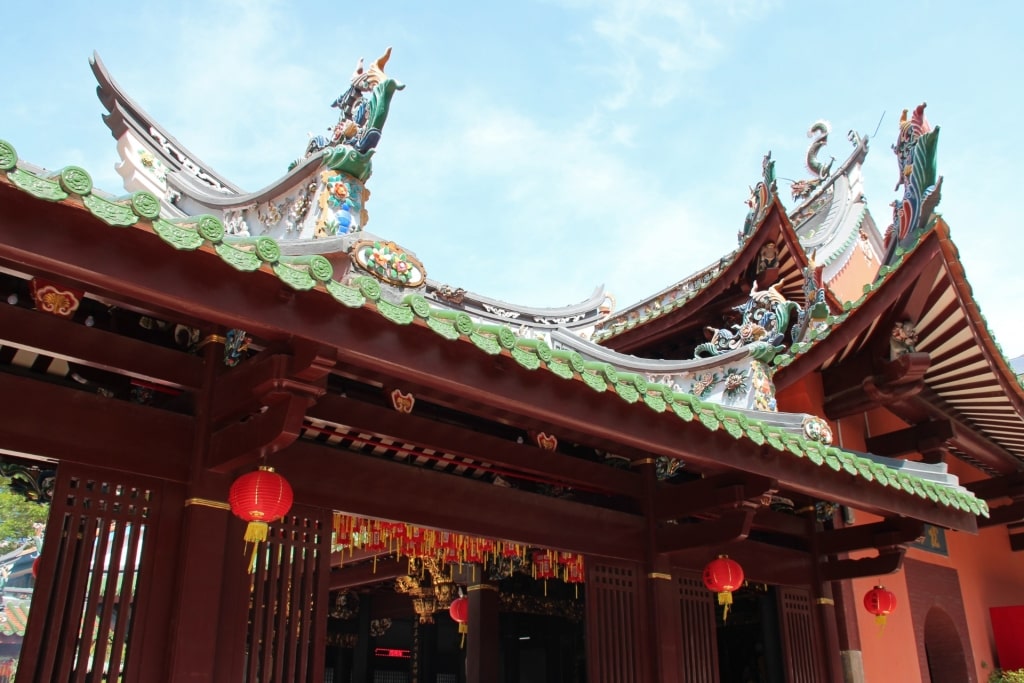
Thian Hock Keng Temple
Constructed in 1839, Thian Hock Keng isn’t only one of Singapore’s oldest temples but one of the most important inter-faith spaces.
Established by a Hokkien clan—the dialect spoken by those who historically lived in China’s Fujian Province—the temple has long welcomed those practicing Buddhism, Taoism, and Confucianism alongside many other devotees, no matter what their dialect.
Due to the intricate craftsmanship, evident in the dragon sculptures, glorious floor tiles, and carved deities, the temple, which is dedicated to the Chinese sea goddess, Mazu is classified as a National Monument.
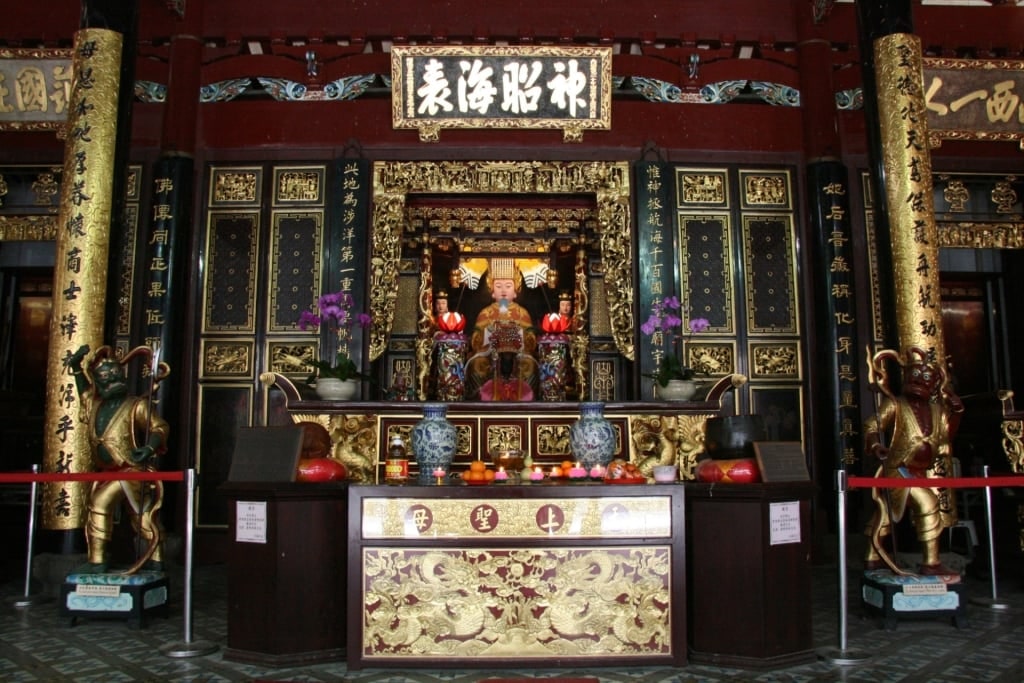
Thian Hock Keng Temple
Collect a leaflet on arrival for an informative self-guided tour, or scan the QR codes for a more immersive experience involving historical images and stories. Don’t miss the smaller but no less colorful Yu Huang Gong temple just behind, located on Telok Ayer, the main road of the sub-district of the same name.
There are other important buildings on the same road. Most notable are Nagore Dargah Shrine and Al-Abrar Mosque, both originally constructed for Muslim immigrants from India.
Sri Mariamman Temple
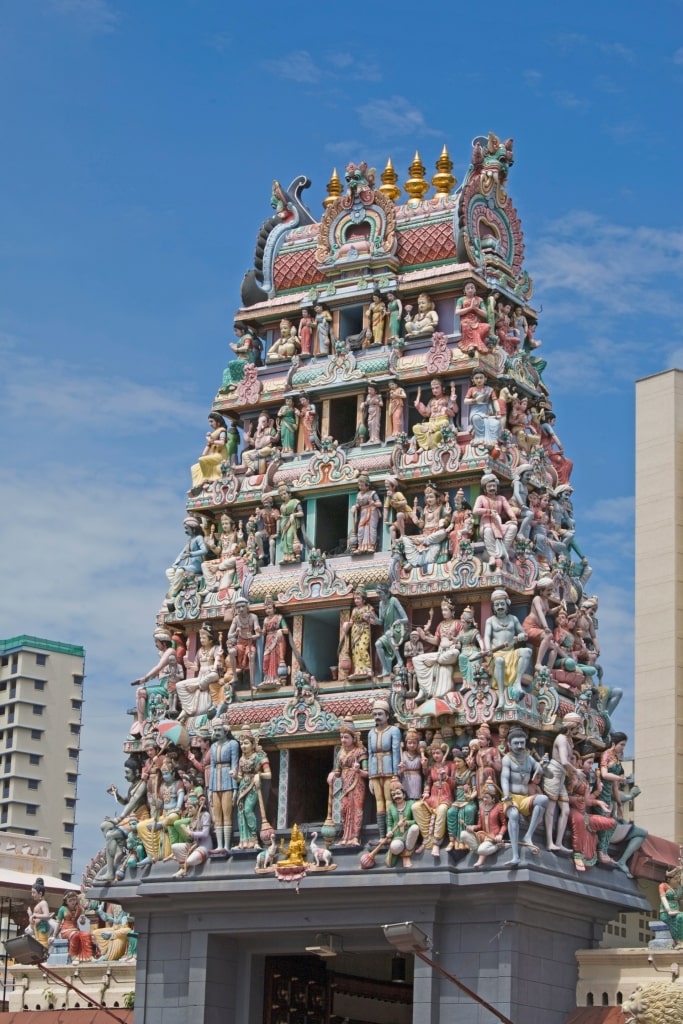
Sri Mariamman Temple
Sri Mariamman’s kaleidoscopic, statue-carved exterior and gopuram are an unmissable welcome to Singapore’s largest Hindu temple. Even before entering the serene space, the five-tiered entrance tower, decorated with hundreds of carved deities and worshippers, enthralls.
The first temple was built here in 1827 and has since expanded. However, the original wooden temple is now placed inside the main sanctum. Public visits are possible in the morning or late afternoon.
Sri Layan Sithi Vinayagar Temple
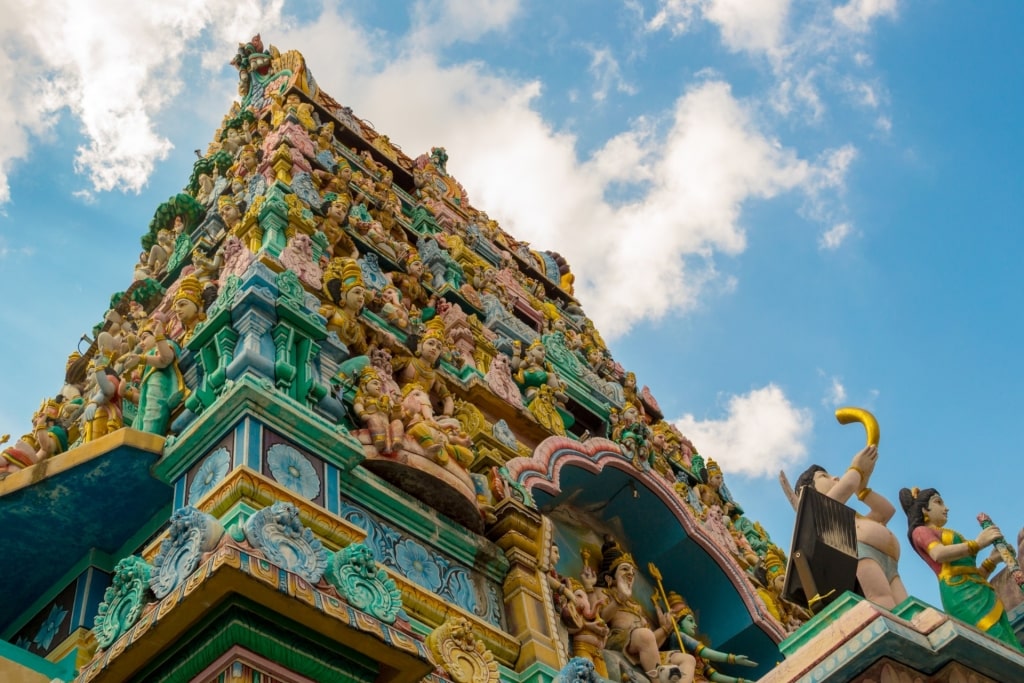
Sri Layan Sithi Vinayagar Temple
Dedicated to Vinayagar, Lord Ganesha, this small temple, fronted by an eye-catching, pastel-hued gopuram, is worth visiting to witness the many attendees who come to perform parikrama.
Tradition here dictates that 108 parikramas, or circles around the inner sanctum, should be undertaken to complete the ritual, which can often make the small space quite crowded. As community breakfasts and late afternoon prashaad, devotional offerings, are part of the day, it’s best to try to visit a little before noon or early evening.
Masjid Jamae
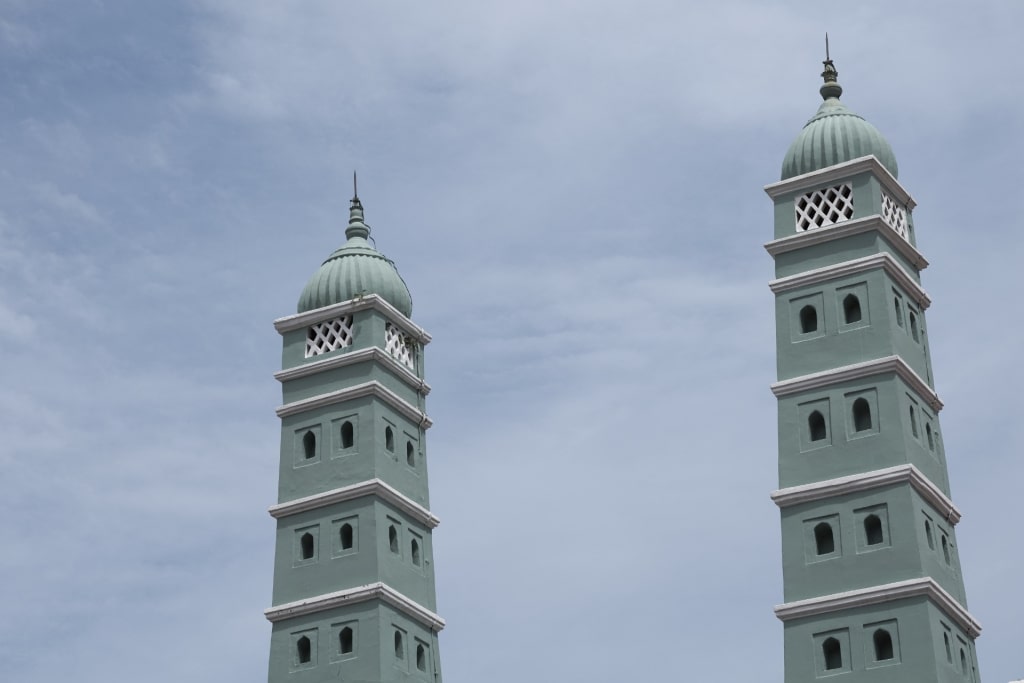
Masjid Jamae
With an unmissable olive green exterior and two entrance-flanking minarets, Jamae Mosque is one of Singapore’s first mosques and most recognizable places of worship. It opened in 1835, providing a central hub for the Chulia community, Tamil Muslims from Southern India.
During the afternoons, it’s possible for non-practicing guests to see the interior on a guided tour. A small, museum-like space shares some of the mosque’s history while promoting interfaith workings.
Things to Do in Chinatown, Singapore
Photograph Pretty Pagoda Street

Pagoda Street Photo by Dietmar Rabich on Wikimedia Commons, licensed under CC BY-SA 4.0
One of Chinatown Singapore’s most animated and all-encompassing pedestrianized lanes, lantern-strung Pagoda Street is an excellent starting point to soak up the sounds, scents, and shops of the district.
Lined with pretty colonial-era, vibrant shophouses and named for the adjacent Sri Mariamman Temple, the brief end-to-end walk takes in a medley of architectural styles, busy bars, neon signs, and a covered food market.
Climb the stairs at the far end, just beyond the MRT escalators, to take it all in and capture an iconic photograph of the pretty historic street framing the futuristic high-rises beyond. Behind, the garden-like pedestrian bridge, complete with a vivid red pagoda, affords excellent views of the mosaic-adorned Art Deco Majestic building, a former Cantonese opera house.
Learn Chinatown’s Story

Chinatown Heritage Centre Photo by Joyofmuseums on Wikimedia Commons, licensed under CC BY-SA 4.0
For a deeper dive into Chinatown Singapore’s history, allow some time to visit a few of the district’s cultural and heritage-sharing spaces.
Pagoda Street’s Chinatown Heritage Centre, currently closed for renovation, spans three of those most representative three-story shophouses, faithfully restored inside to show how these important buildings would have looked in the 1950s.
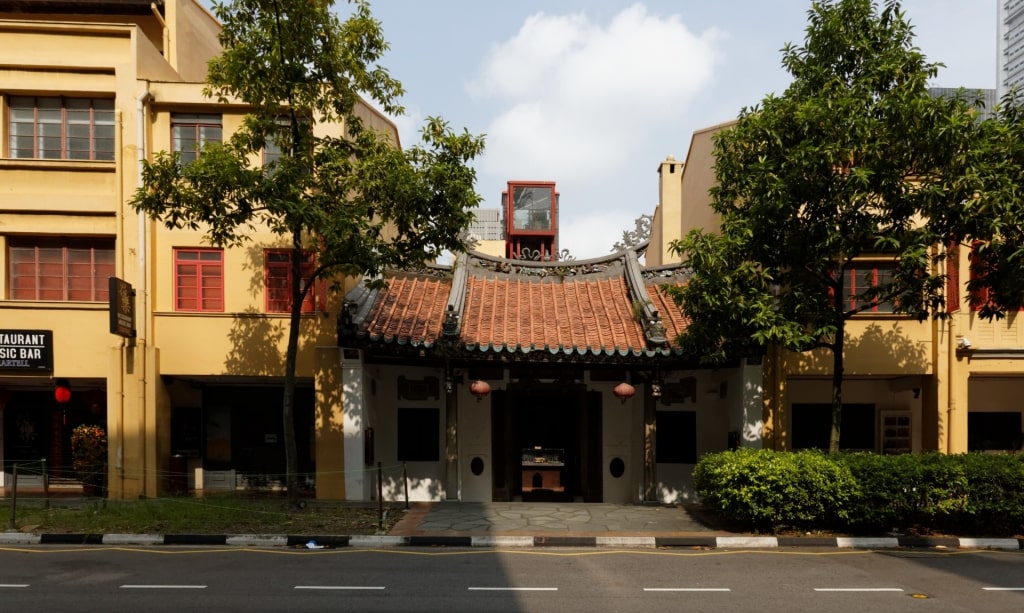
Fuk Tak Chi Temple Photo by KimonBerlin on Wikimedia Commons, licensed under CC BY-SA 2.0
At Fuk Tak Chi Temple, converted into a museum in 1994, study stories of the Cantonese and Hakka communities who immigrated here in the late 18th century, recounted through model homes, boats, and sculptures. Kreta Ayer Heritage Gallery focuses on opera and puppetry alongside black-and-white photographs documenting how the area has evolved over the decades.
University-managed NUS Baba House is another excellent and often overlooked cultural time capsule. Pre-book a visit to glimpse intricate ceramics, textiles, and home decor representative of Peranakan—the first Chinese migrants to Singapore—culture inside an immaculately resorted late 19th-century three-story townhouse.
See How Singapore Has Evolved
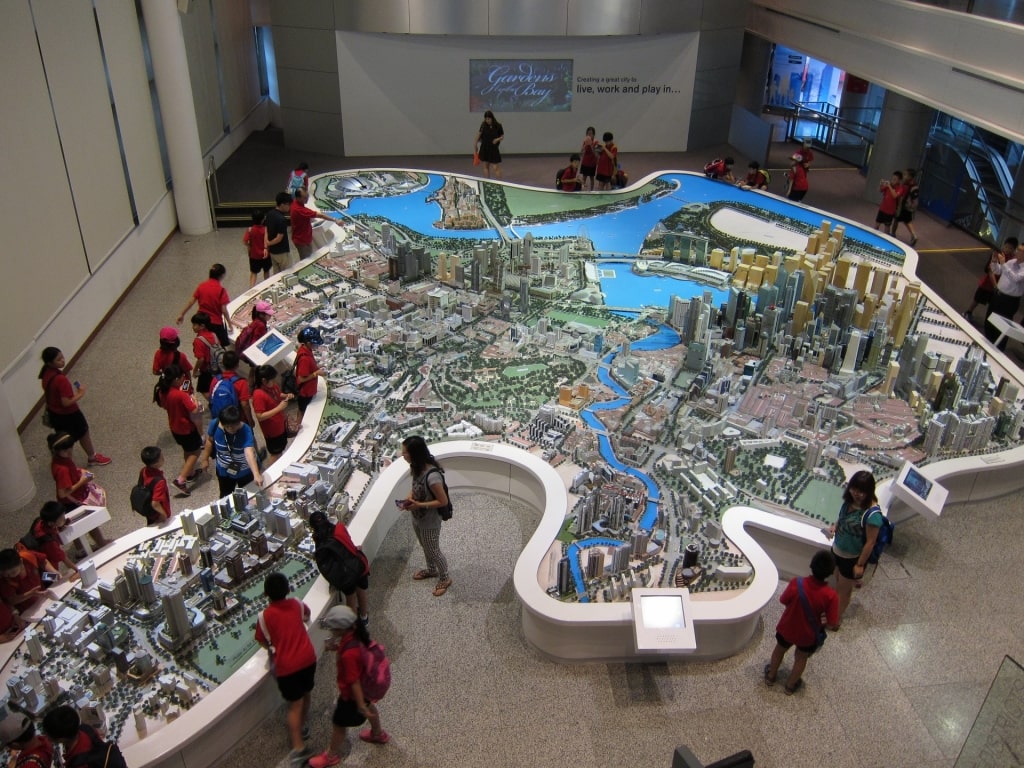
Singapore City Gallery Photo by LimeBye on Flickr, licensed under CC BY 2.0
Spend an hour in the immersive Singapore City Gallery for a city-wide historical overview. Wall-covering touch screens document how, in just one century, Singapore has become one of the world’s most futuristic cities.
Interactive tablets dive deeper into Singapore’s Smart Nation concept while an expansive, ever-changing model of the whole island nation provides context.
Admire Chinatown’s Street Art

Chinatown Street Art Photo by John on Flickr, licensed under CC BY-SA 2.0
Plentiful pops of color and splashes of contemporary art representing ancestral heritage have converted Singapore Chinatown into an open-air art gallery. Spend some time seeking out the area’s street art and murals, many of which have been painted by locally-born Yip Yew Chong, as you tour the district’s most famed sights.
Don’t miss the playful and heartwarming Lantern Festival mural that captures the lights, typical snacks, and feel-good atmosphere of the Mid Autumn Festival.
The calligraphy-adorned Letter Writer depicts one of the workers who used to make their living crafting communications back in China. And if you cannot see a traditional performance, Temple Street’s highly-detailed Cantonese Opera mural showcases the theater’s traditional costumes.
Soak Up Keong Saik Road
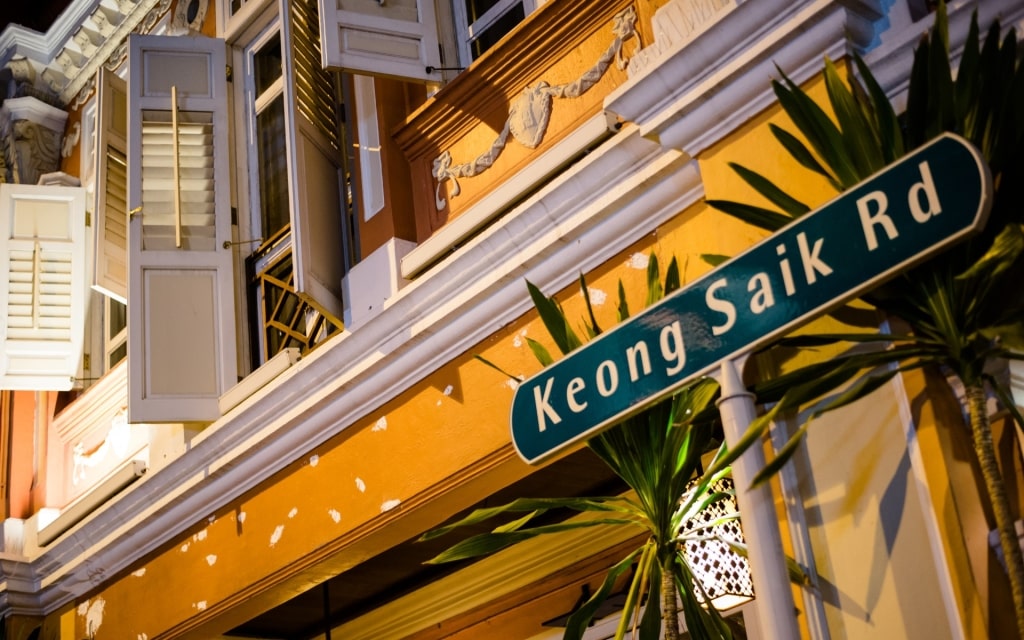
Keong Saik Road
Contemporary culture and heritage buildings sit side-by-side along Keong Saik Road. The main avenue of the Bukit Pasoh subdistrict and Chinatown’s former red light district, the street is now regarded as one of Singapore’s chicest corners.
Boutique hotels, constantly evolving on-trend bars, and some of the best-preserved examples of balconied townhouses follow the arched laneway, leading to some of the most photographed buildings in the whole district. Don’t miss the single-story Cundhi Gong, a Nanyang-style temple between two townhouses.
Shop at Chinatown Street Market or People’s Park Complex

Singaporean souvenir
Shopping comes in all shapes and sizes in Chinatown. From the modern, mural-decorated Far East Square to the open-air Chinatown Street Market, overflowing with woven bags, incense stalls, and patterned lacquered fans, it’s easy to spend a whole day browsing and buying.
People’s Park Complex, a hulking, high-rise, semi-residential brutalist building, seems like an eye-sore worth skipping. But for people watching and soaking up local day-to-day life, it can’t be beaten. Even if the complex’s heyday is firmly in the past, there’s something nostalgic about buying beauty products, jewelry, or electronics at the remaining shops inside this stuck-in-time mall.
Amble to Ann Siang Hill Park
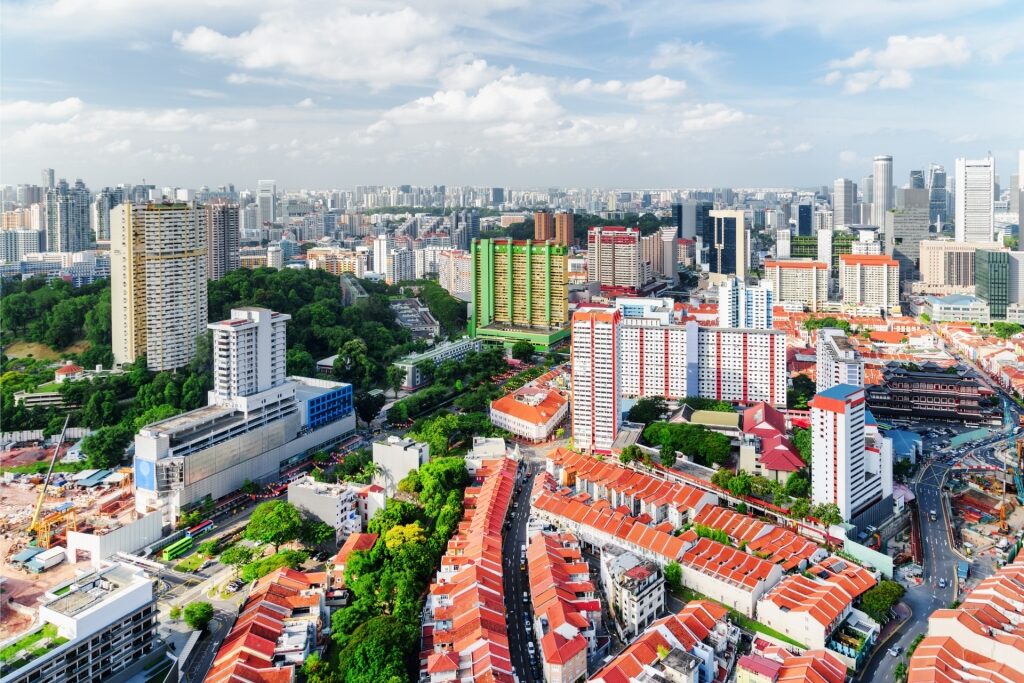
Ann Siang Hill Park
Slip away to a calmer corner of Singapore Chinatown as you amble down Ann Siang Hill Road, flanked by trendy bars, art galleries, and pocket-sized shops, to a little leafy corner.
This small, hill-hugging green lung is a delightful spot to stroll, passing dense ferns, breadfruit, and tamarind trees, and one of the city’s last remaining 19th-century wells before pausing at a bench under a shaded, overgrown awning.
Read: Best Things to Do in Singapore With Kids
Relax in Historical Hong Lim Park
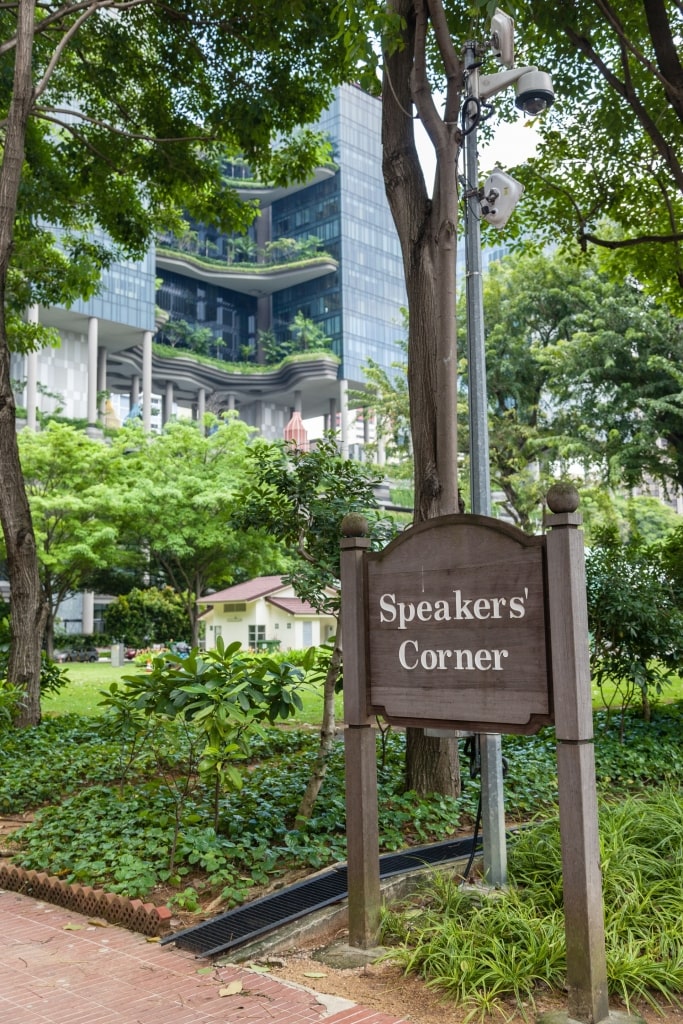
Hong Lim Park
Serving as a green buffer between Singapore Chinatown and downtown, the diminutive and grassy Hong Lim Park is historically important. A popular assembly point for Chinatown’s community events, the space has hosted political rallies, Chinese operas, and international cricket games.
Nowadays, it’s best known for being home to the city’s Speaker’s Corner. Occasionally, near the wooden sign denoting the spot, you might still witness public speaking, permits allowing.
Eat Your Way Around Chinatown
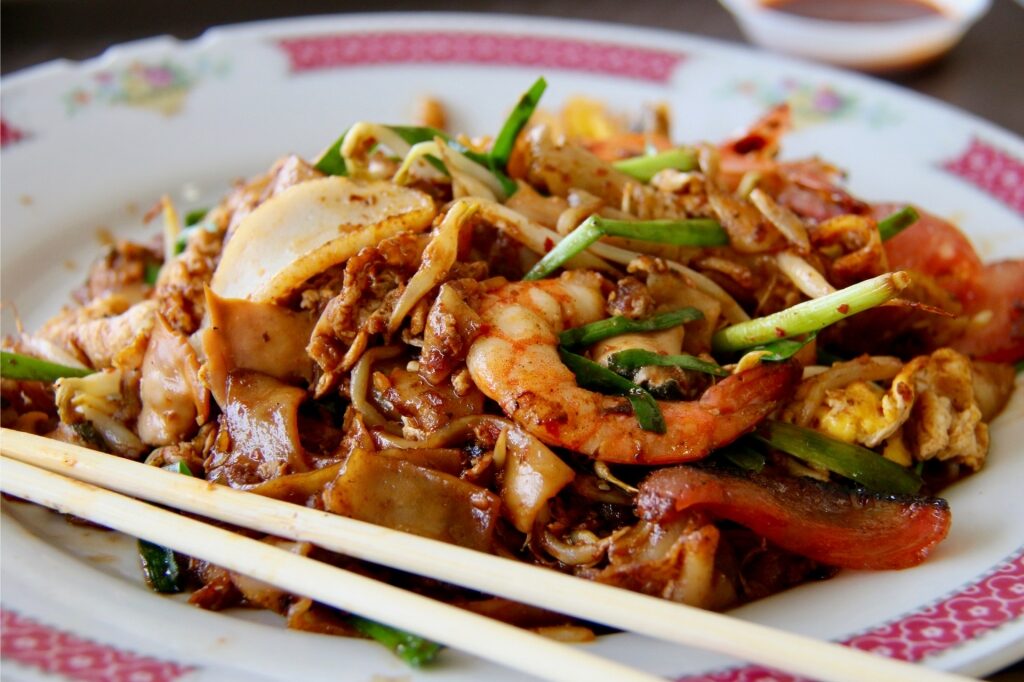
Char kway teow
One of the greatest joys of Chinatown Singapore is its cuisine. Some exceptional, high-end restaurants are packed into the quarter, but the hawker centers deserve the most praise.
These predominantly semi-enclosed food markets are typical of the city-state and neighboring Malaysia, providing a more sanitized and grouped eating experience than the numerous mobile stalls that would congregate in the past.
Hawker centers bring all of the flavors of Southeast Asia under one roof, so it’s easy to try a handful of different dishes in one sitting. They’re popular with local workers as a lunch break go-to, so arrive before 11 am for an early lunch or visit for a mid-afternoon tasting to avoid long waits to both order and find a seat.
Restaurants
Chinatown Complex
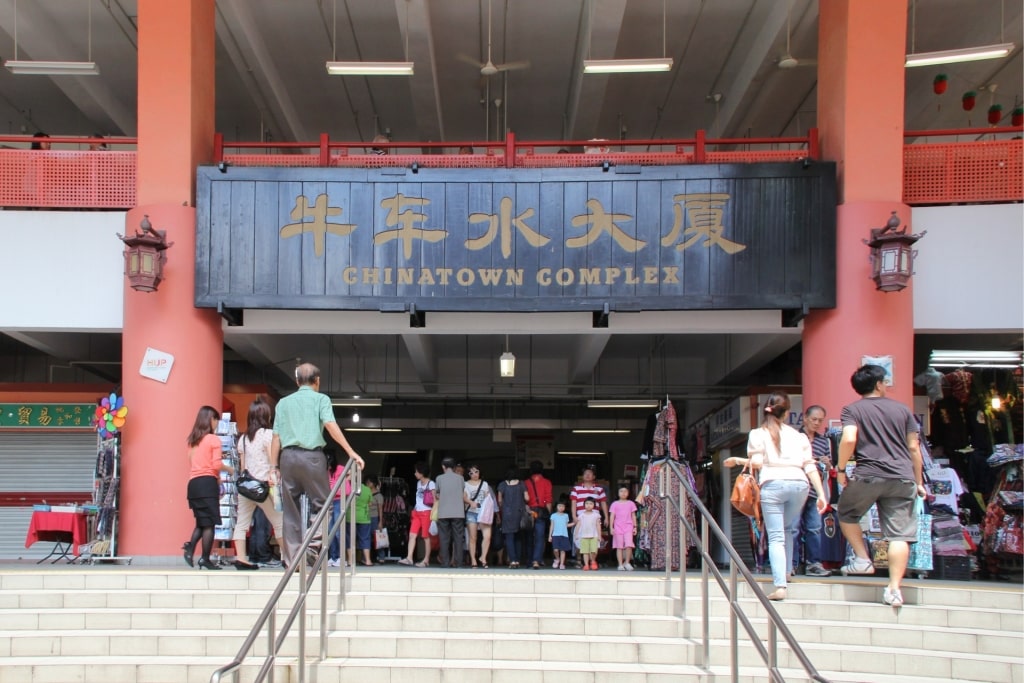
Chinatown Complex Photo by Erica Chang on Wikimedia Commons, licensed under CC BY 3.0
At Singapore’s largest hawker market, you’ll be spoilt for choice at Chinatown Complex. Most famous is Hawker Chan, founded by Malaysian-born Chef Chan Hon Meng, who became the first Michelin star-awarded hawker chef in 2016.
While the accolade was lost five years later, his legendary food stall—he has since expanded to have a sit-down restaurant nearby—is still one of this two-story market’s most popular eateries.
Hawker Chan is best known for his Hong Kong-style roasted chicken and rice or char siew pork. You’ll want to pair his offerings with some popiah, a flavor-packed spring roll from Ann Chin Popiah, and a side of Shi Xiang’s satay.
Read: Singapore Vs. Hong Kong: Which Should You Visit?
Maxwell Food Centre

Maxwell Food Centre
Established in the 1950s, Maxwell’s began as a clutch of open-air street vendors before gaining an official building in 1986. It’s now one of the hawker centers that Singapore is known for.
It’s affordable and unassuming and as such, the stool-like tables dotted around the space soon fill up. Arrive early to hop between the stands while sampling local favorites, such as poached Hainanese Chicken at Uncle Louis or the mouthwatering roasted duck at Ah Zhong.
Amoy Street Food Centre
With long, communal tables and an animated atmosphere, Amoy is an excellent spot for relaxed dining at Michelin Guide-recognized stands. Best of the bunch is A Noodle Story, famed for pork-infused ramen. But be warned, with only a few hundred bowls prepared daily, you’ll need to be quick.
Man Man
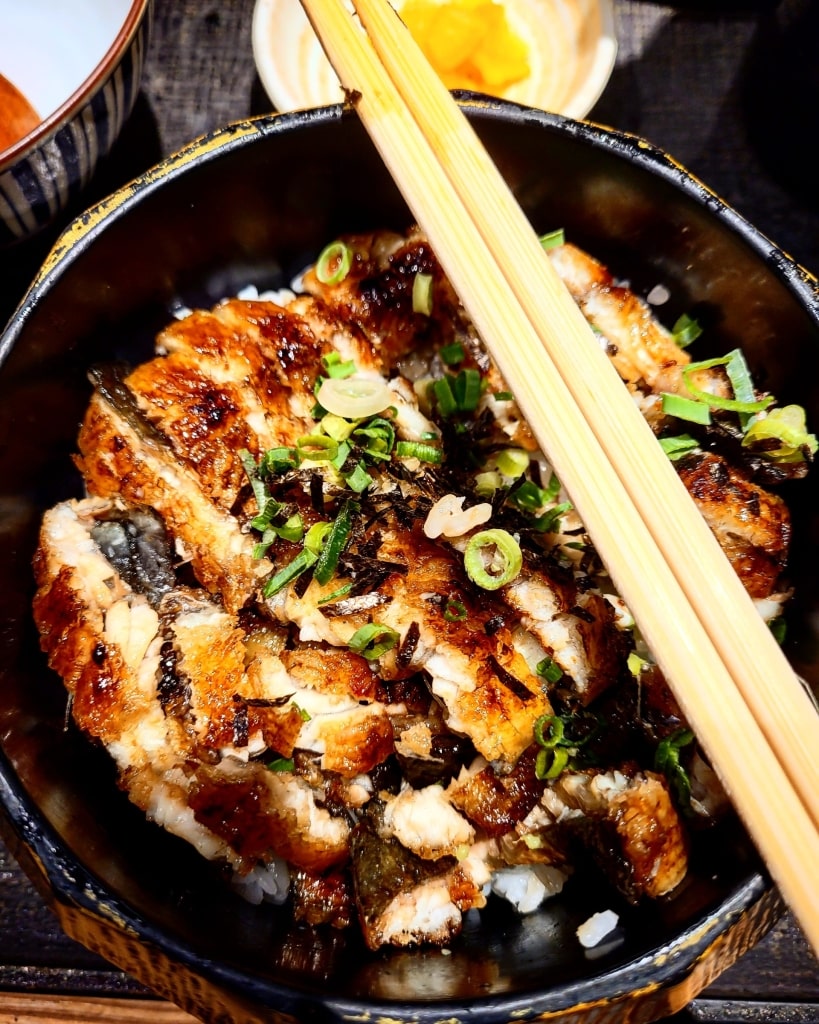
Unagi
The original outpost of this locally loved chain is an intimate, long-time favorite for Japanese Unagi, freshwater eel. The best seats are along the counter with a window to the chefs preparing and grilling the eel.
Wan Nian Stone Pot Fish
Serving arguably some of Chinatown Singapore’s best seafood, this humble, family-run restaurant is an excellent locale to try Singapore’s signature dish, chili crab. Besides the crab served in a tangy, hot tomato sauce, the menu has plenty of whole fish options, soups, and hotpots, which bubble away in the center of the table.
Potato Head
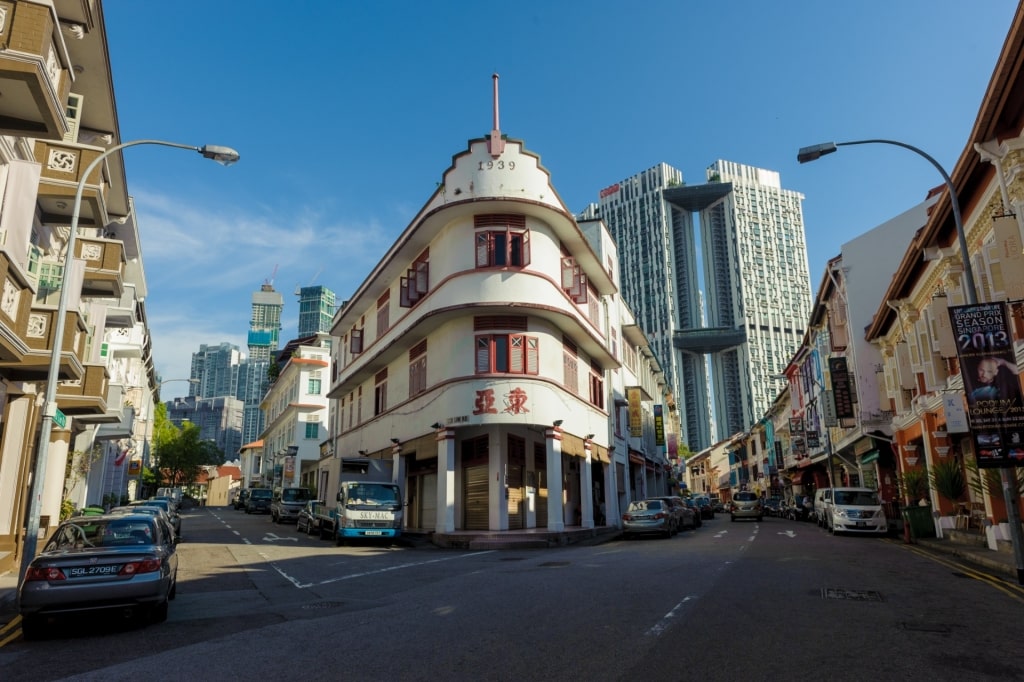
Potato Head Photo by Silas Khua on Flickr, licensed under CC BY 2.0
Housed inside Keong Saik Road’s most distinctive corner building, the Singapore outpost of Bali’s famed beach club compensates for its lack of sea views with excellent cocktails and a jovial environment over three floors.
Sip cocktails on the rooftop while taking in Singapore’s skyline, have something more tailored to your taste in the studio bar, or enjoy international cuisine in the hyper-stylized, contemporary main dining room.
Travel Tips
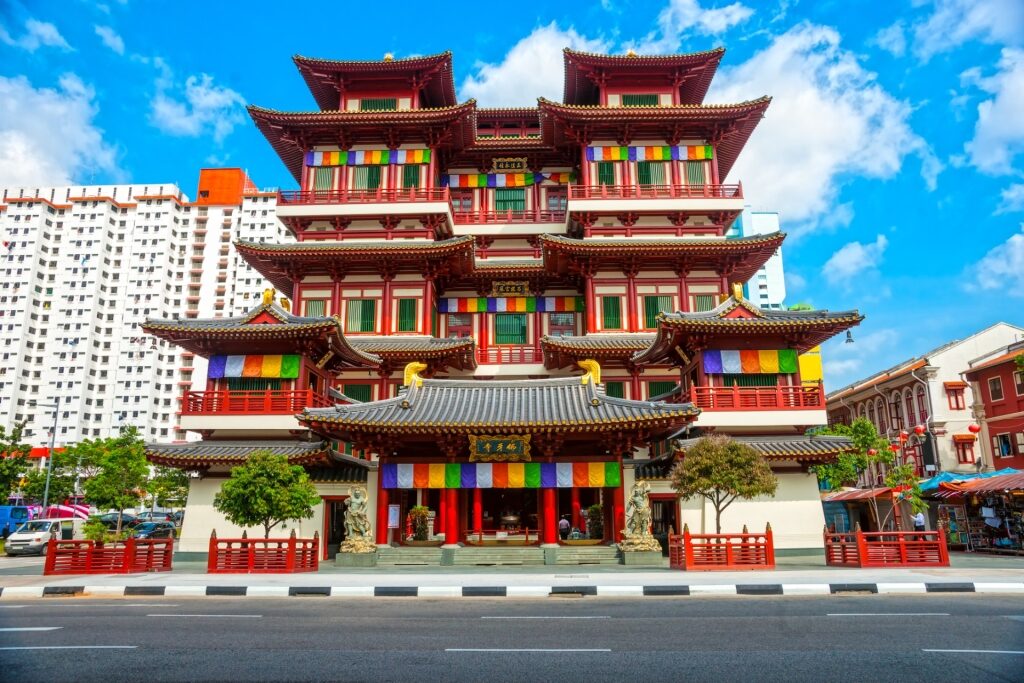
Buddha Tooth Relic Temple and Museum
Chinatown Singapore is best explored on foot. The district is flat and fairly compact, with pretty pedestrian pockets you wouldn’t want to miss. Two main Mass Rapid Transit stations—Chinatown and Maxwell—provide easy access from elsewhere in the city.
As most attractions in Singapore Chinatown are temples, shrines, and mosques, you’ll want to pack suitable clothing to cover knees, shoulders, and backs. Light, floaty dresses or linen trousers are a fantastic idea due to Singapore’s tropical climate, while a shawl and slip-on shoes will also be helpful.
While the major temples and museums hold regular hours, some smaller cultural spaces—such as Kreta Ayer Heritage Gallery and NUS Baba House—are only open by appointment. Plan your Chinatown itinerary at least a few days in advance to make any reservations required.
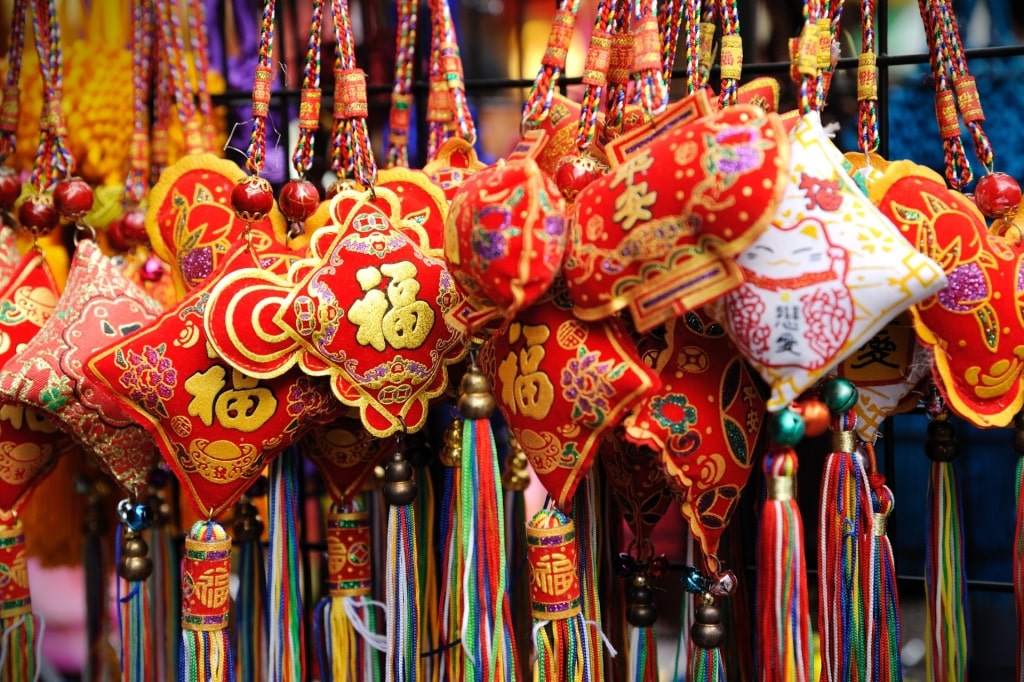
Singaporean souvenirs
To ensure that your souvenirs from Singapore are produced by local craftspeople, always ask. Most of the local markers cater primarily to residents rather than visitors, and it isn’t always clear if the gorgeous pair of chopsticks or ceramic tea set is artisanal or a mass-produced import.
Many shops accept credit card payments, but it’s always a good idea to carry some Singapore Dollars for hawker centers and market stalls.
Read: Three Days in Singapore
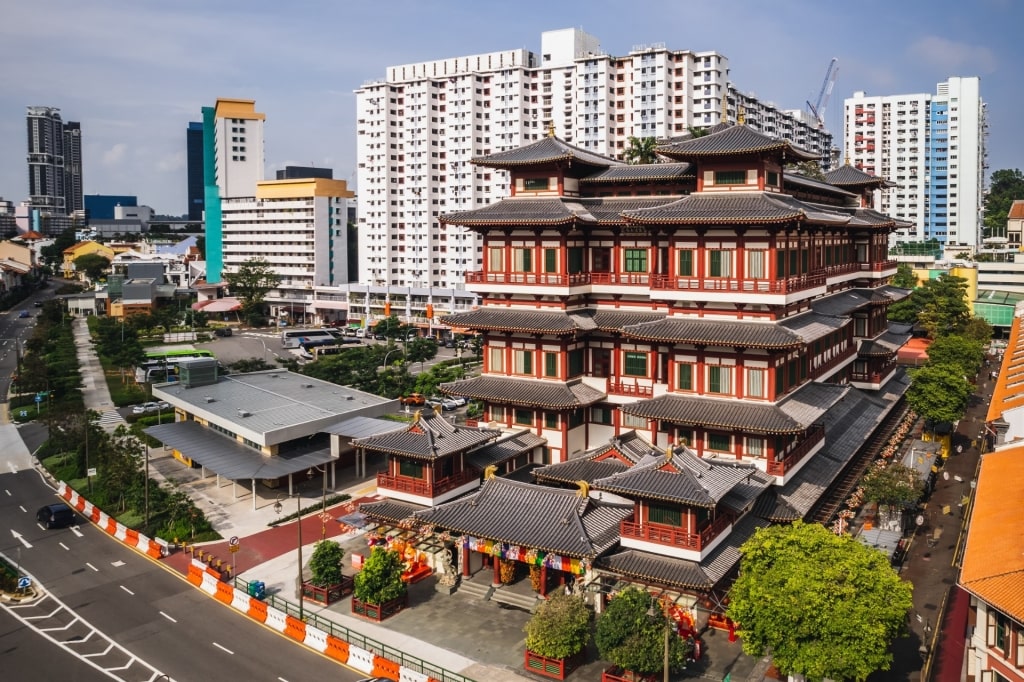
Buddha Tooth Relic Temple and Museum
Browse Celebrity’s cruises to Singapore and explore the city’s kaleidoscope of heritage and futuristic skyline on your next vacation to the Lion City.
